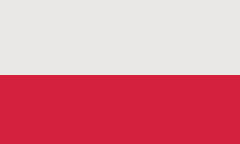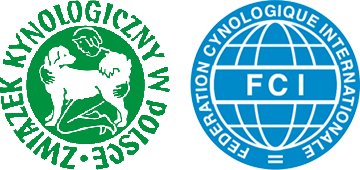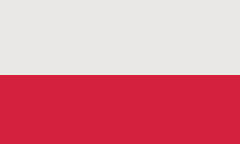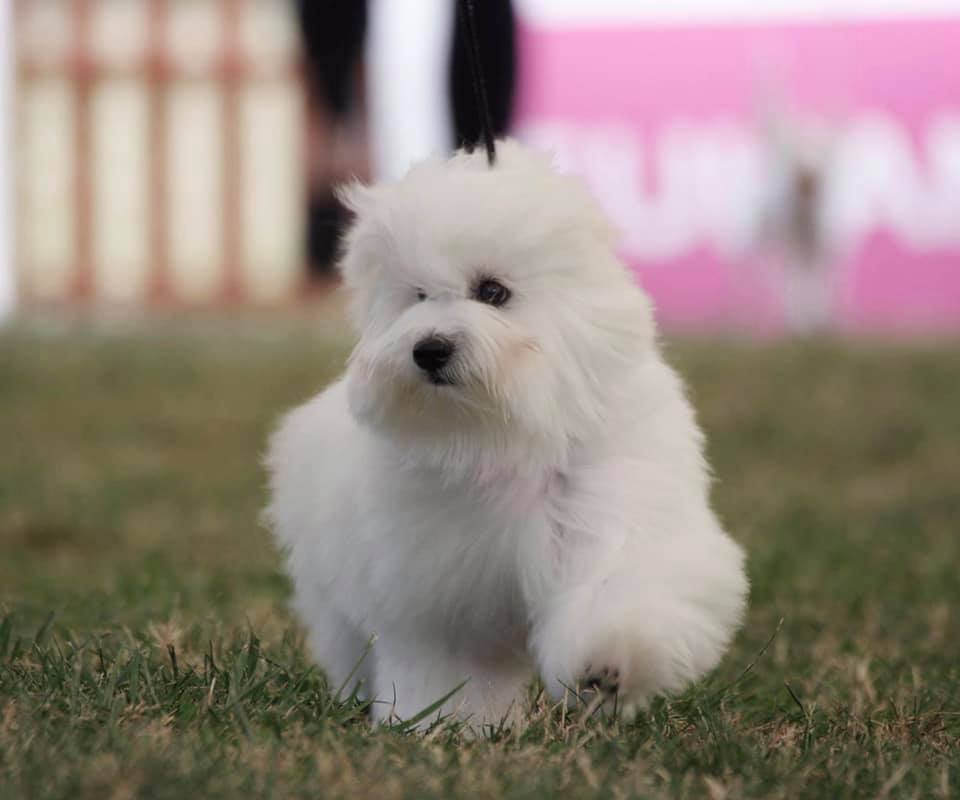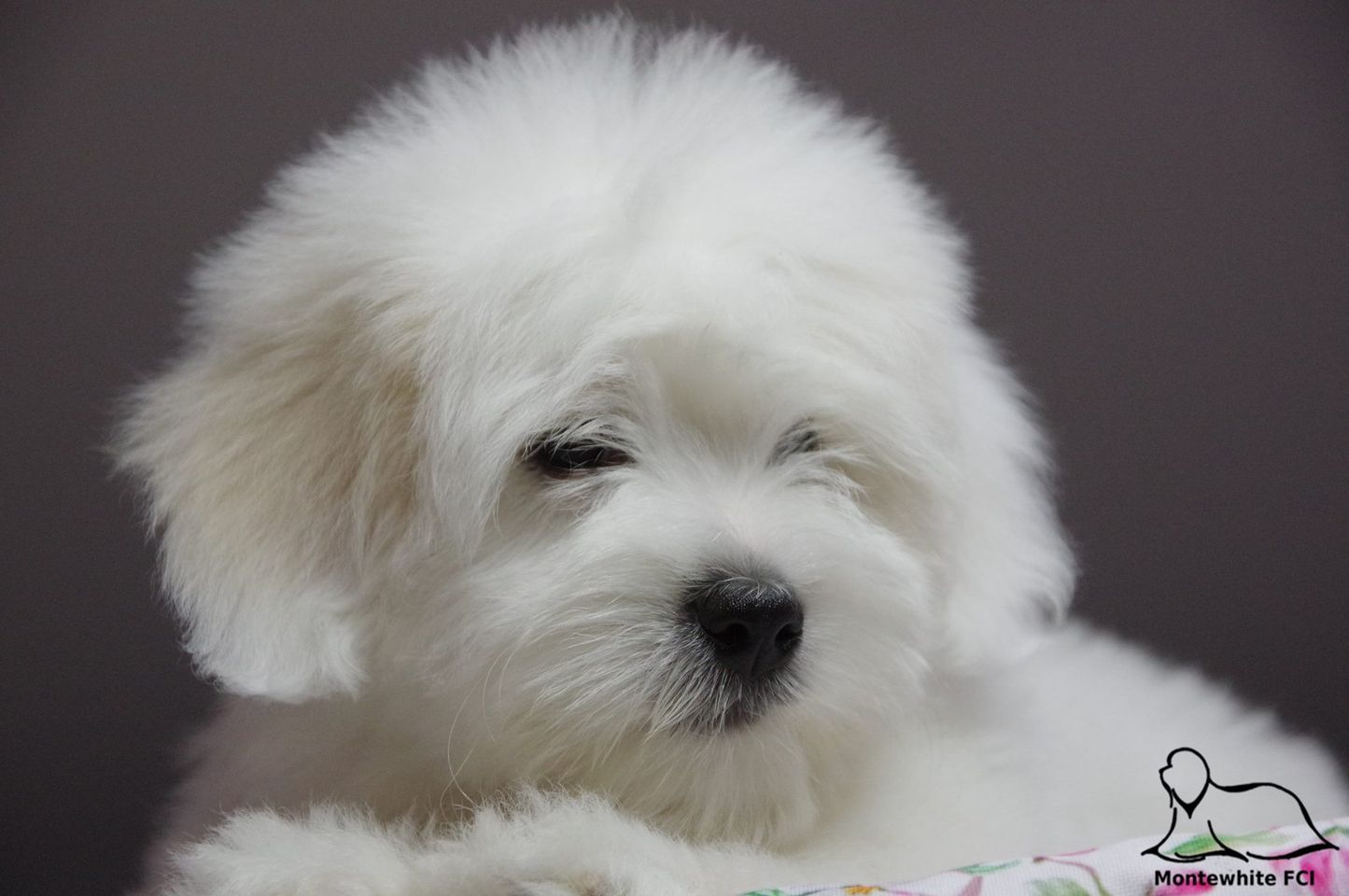ORIGIN: Madagascar.
PATRONAGE: France.
DATE OF PUBLICATION OF THE VALID STANDARD: November 25, 1999.
CLASSIFICATION: Companion Dogs.
CLASSIFICATION F.C.I. :
Group 9 Companion and decorative dogs.
Section 1.2 of the Coton de Tuléar.
They are not subject to working trials.
BREED HISTORY:
Known in France long before its official appearance in 1970, the newcomer from Madagascar quickly earned a prominent place among companion dog breeds there. He is now known all over the world.
GENERAL APPEARANCE:
A small, long-haired companion dog, with a white, cotton-like robe, round, dark eyes, and a cheerful, intelligent expression.
IMPORTANT PROPORTIONS:
• The ratio of the height at the withers to the length of the body is 2: 3.
• The ratio of head length to torso length is 2: 5.
• The ratio of the length of the skull to the length of the muzzle is 9: 5.
BEHAVIOR / TEMPERAMENT:
Joyful, firm, very sociable – both towards people and other dogs. Perfectly adapts to any lifestyle. The temperament of the Coton de Tuléar is one of the breed’s most important characteristics.
HEAD:
Short; seen from above – triangular.
CRANIAL REGION:
Skull: Seen from the front, slightly rounded; rather broad in relation to its length. Eyebrow arches poorly developed. Frontal furrow is poorly marked. Slightly palpable occipital tumor and crest. Zygomatic arches well developed. Stop: Slightly marked.
FACIAL REGION:
Nose: It forms an extension of the top of the muzzle; black, although brown is also acceptable. Nostrils wide open.
Muzzle: Straight. Lips: Fine, tight, of the same color as the nose.
Jaw and mandible and teeth: Teeth equal. Scissor bite, pincer bite or a tight undershot bite, with good contact between the upper and lower teeth. Failure to P1 does not lower the grade; M3 are not taken into account.
Cheeks: Flat.
Eyes: Rather round, dark, lively, set wide apart. The rim of the eyelids is well pigmented, black or brown – depending on the color of the nose.
Ears: Hanging, triangular, set high on the skull, fine at the tips. Worn close to the cheeks; reaching to the opening of the mouth. Covered with pure white or light gray hair (a combination of white and black hair, giving the impression of a light gray color) or with patched hair (a mixture of white and fawn hair, giving the effect of yellow patches).
NECK:
Well muscled, slightly arched. Well set in the shoulders. The neck to torso ratio is 1: 5. Shapely neck without dewlap.
TORSO:
The backline is very slightly convex. The dog should be longer than taller.
Withers: Only slightly pronounced.
Back and loins: Strong back; topline very slightly arched.
Loins well muscled.
Croup: Oblique, short and muscular.
Chest: Well developed, descending to the elbows, long.
Ribs well sprung.
Belly: Tucked up but not excessively so.
TAIL:
Set low, in line with the spine.
• Carried below the ankle when at rest; end raised.
• While moving: “joyfully” curled over the back, pointing towards the nape, withers, back or loins. In dogs with lush hair, the tip of the tail may rest on the dorso-lumbar region.
LIMBS FOREQUARTERS:
Front feet upright. Shoulder and upper arm: Oblique, muscular shoulder blade. Angle between shoulder blade and upper arm: approx. 120 °. The length of the shoulder approximately corresponds to the length of the shoulder blade. Forearm: Forearms vertical and parallel, well muscled and well boned. The length of the forearm is approximately the same as that of the arm. Wrist (wrist joint): Continues the line of the forearm. Pastern: Strong; seen in profile – slightly bent. Front feet: Small, round; fingers tightened; well formed; pigmented pads.
HINDQUARTERS:
Hind feet upright. Although spurs (extra fingers) are not desired, their presence does not lower the score. Thighs: Well muscled; the angle between the hip and thigh is approximately 80 °. Lower thigh: Placed obliquely; it forms an angle of approx. 120 ° with the femur. Hock joint: Dry, well defined; makes an angle of approx. 160 °. Metatarsus: Vertical. Hind feet: Similar to the front feet.
GAIT / MOVEMENT:
Free and flowing, not too spacious. While in motion, the top line remains unchanged. No trace of irregular gait.
LEATHER:
Delicate, close fitting all over the body; usually pink, it can be pigmented.
COAT HAIR:
This is an important breed trait; its name comes from her. Very fine and soft hair with a cotton structure; it cannot be hard or rough. Dense, plentiful; it may be very slightly wavy.
OINTMENT:
Biel is the base ointment. A few slight highlights of light gray (combination of white and black hair) or red-screened (combination of white and fawn hair) are allowed on the ears. On other parts of the body such markings may be tolerated as long as they do not alter the perception of the predominant whiteness of the coat; however, they are not desired.
HEIGHT AND BODY WEIGHT:
Height at the withers: Dogs: 26-28 cm, with a tolerance of 2 cm above and 1 cm below. female dogs: 23-25 cm, with a tolerance of 2 cm above and 1 cm below.
Weight: Dogs: From 4 to max. 6 kg. female dogs: From 3.5 to – maximum – 5 kg.
FAULTS: Any deviation from the above-mentioned characteristics should be considered faults, the assessment of which should be proportional to their degree and extent.
SERIOUS FAULTS:
• Skull: flat or too convex and narrow.
• Muzzle: disproportion between the skull and the muzzle.
• Eyes: light, too almond in shape; entropion, ectropion, bulging eyes.
• Ears: too short, with insufficient hair length; ears folded back (so-called rubella ear).
• Neck: too short, too stocky at the shoulder, too slender.
• Back: Excessively arched, saddle-shaped.
• Croup: horizontal, narrow.
• Shoulder: steep.
• Limbs: turned in or out; elbows out; metatarsus wide apart or too close; steep angulation.
• Coat: too short, too wavy, curly.
• Pigment: partial lack of pigmentation or too light pigmentation of the eyelids and lips; poorly pigmented nose, with under-pigmented spots.
ELIMINATING FAULTS:
• Aggressive or overly shy.
General impression:
• Weakly expressed type (not sufficiently relevant to the breed’s character, ie the animal insufficiently resembles the rest of the breed).
• Body height and weight not meeting the requirements of the standard. Disadvantages for details:
• Snout: Nasal bridge of convexity.
• Eyes: protruding, with signs of dwarfism: too light, strabismus.
• Ears: erect or semi-erect.
• Tail: Not reaching to the hock joint; set high, twisted (forming a tight ring); carried flat on the back or hip; carried in a candle-like manner. Taillessness.
• Coat: unusual; clearly twisted, woolly, silky.
• Color: with larger colored markings or any definite black markings.
• Pigment: no pigmentation of the eyelids, nose or lips at all.
Anomaly:
• Overshot or undershot or overshot mouth that prevents the incisors from touching; too large spaces between the incisors.
• Missing teeth other than P1 or M3.
• Aggressive or extreme lack of confidence. Any dog showing physical or mental abnormalities should be disqualified.
Note: Male animals should have two apparently normal testicles fully descended into the scrotum.

